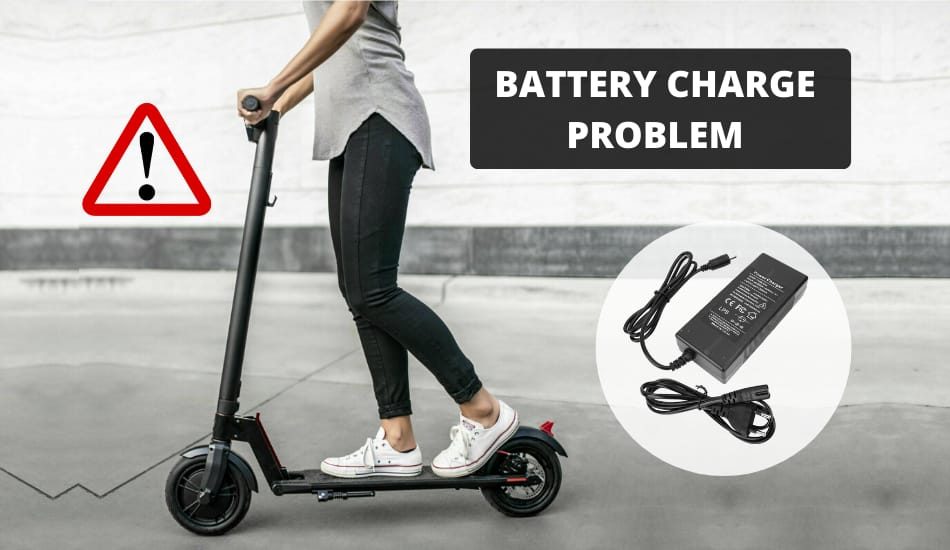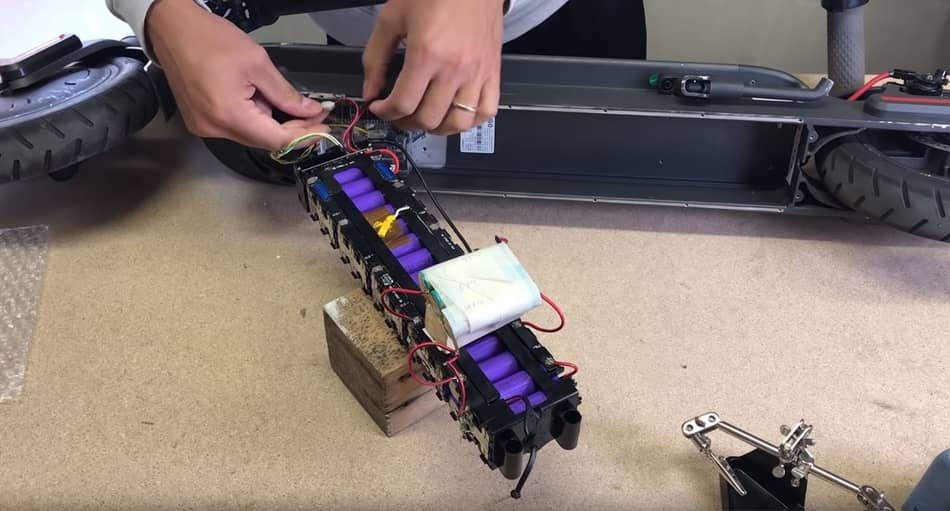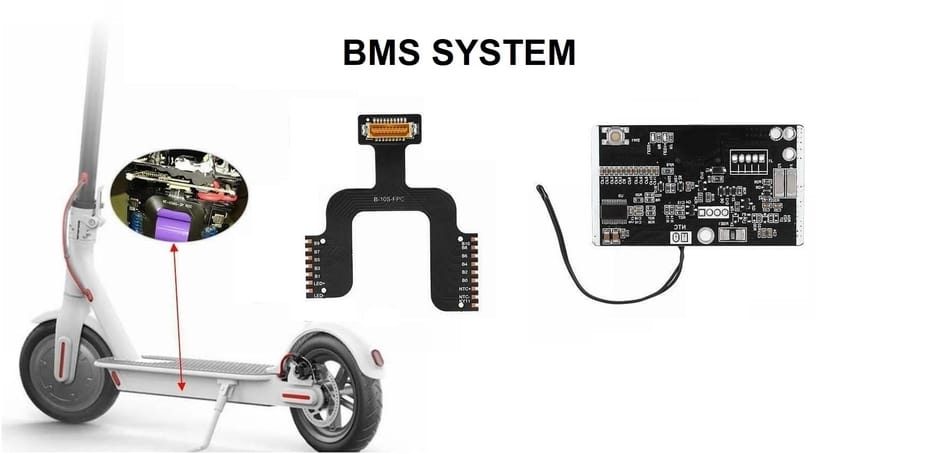
Have you encountered a problem where the battery on your electric scooter is not working? Almost every electric scooter will encounter this issue at some time. Although electric batteries are built to last and have a large number of cycles, they also require maintenance. Therefore, if you want to get the most out of your battery, you should not wait until the last minute, but start to maintain it right now. The main problem that batteries encounter is poor storage, usage temperature, and deep discharges. But what you should do if your electric scooter battery won’t charge?
So What To Do If Your Electric Scooter Batttery Doesn’t Charge? If the battery of the electric scooter does not charge, the problem may be either in the battery or in the charger itself. To determine what the problem is, use the charger on another model of an electric scooter. If the charger is working, then the problem is with the battery.
The problem sometimes can be with the motor, tires, and battery packs. But the battery is certainly the biggest issue when it comes to scooters. The worst thing that can happen to your electric scooters is battery failure. The battery that can’t charge and work properly is the user’s worst problem! Without a battery your electric scooter is useless.
To determine why the battery won’t charge on your electric scooter you can do the following. If there is a problem with the battery, it may be damaged or the battery life has expired. If there is a problem in the charger you can test it by using a multimeter and check the voltage at one end.
Types of failure: The reason why the battery is not working:
1. Battery Life: The battery has lost its charge/discharge life cycle and can no longer be used.
2. Battery Damage: The battery has been damaged and can no longer be charged or used.
3. Charging Issue: The charger is defective and cannot be used to charge the battery. Replace the charger.
Things To Know About Electric Scooter Batteries
Electric scooters mostly common comes with the nickel-metal hydride (NiMH) and lithium-ion (Li-Ion) batteries. Although Lithium-ion batteries are most commonly used in electric scooters because they give the most energy density per weight. The most important parameters for each battery are the amount of energy in terms of voltage (V) and ampere-hours (Ah).
Each battery consists of cells. They are followed by battery packs which are made of a group of cells that are forming one unit. Battery cells are configured in a series or parallel so they can provide more voltage or power density. Most electric scooters are typically using 24V, 36V and 48V batteries.
The more voltage (V) the battery has, the faster the electric scooter can go. But there are also other factors that affect the speed of an electric scooter such as the rider’s weight, power, type of motor, and terrain. When we talk about ampere-hours (Ah) of the battery, it indicates the range of the electric scooter. Amper-hours is measurement a battery’s capacity. The higher Ah the battery has, the greater the maximum distance will be. Amper-hour ratings will tell you how far your scooter can go.
If you want to know more about batteries, I have written an Article: Electric Scooter Batteries: Ultimate Guide
Main Reasons Why Your Battery Doesn’t Charge

The battery is the main and most important component of every electric scooter. But what if electric scooter battery won’t charge? If something happens to the battery and you cannot charge it or the battery doesn’t work properly, your electric scooter becomes useless. But mobility scooters also have charging problems. Therefore, it is extremely important to regularly maintain the battery in order to maximize its usability.
For example, if you use your electric scooter every day, you need to charge it every day. It takes about 8-12 hours for the battery to fully charge, so it is best to plug the electric scooter before you go to bed, so it can be ready in the morning.
If you find yourself in a situation where your battery will not charge when you plug it in, the problem could be in one of these three things. The first thing is that there could be a problem with charging, the second situation is that there is a drain on the battery pack, and the last solution is that the battery is dead (the lifetime of the battery). So what could make the battery that doesn’t charge?
1. Battery Life
The problem with battery life cycles. Every battery has a life span, where you have a defined number of charges and discharges that each battery has. So if you for example use the battery for more than two years on your electric scooter, some signs could be showing, such as; shorter range and maximum speed, faster charging time, etc. When you have a dying battery, it won’t charge properly, so you need to replace it.
2. Battery Damage
The battery may be damaged in one or more places. The reason this can happen is due to improper use of electric scooters on different surfaces such as unpaved surfaces, so it caused the battery damage. Also, if you ride your scooter recklessly and perform extreme stunts, it can happen that the battery is damaged. Sometimes the problem can be in the battery wires and other components that are inside your scooter. Batteries come with the battery management system, so it makes it easier to properly charge and discharge the batteries.
3. Charging Issues
The problem may not always be in the battery itself, but it can be a faulty charger or charger port. So the first thing you need to do is check are you using the right charger for the scooter. Also, make sure you are charging your scooter correctly. Are the charger and charging port working properly? Some of these examples might be the reason why your battery doesn’t charge.
How To Properly Charge The Electric Scooter Battery?
When charging the battery on your electric scooter you have to wait for the indicator light on the charger to appear. It must turn green after the process is complete (after around 8-12 hours). If it happens that the indicator light turns green after just few hours (short period of time), there could be a problem with the battery or with the charger, so let the charging continue. It would be best that after each use of the electric scooter if you have time to charge your battery even if the battery is not completely drained. This applies not only to electric scooters but also to mobility scooters and go go scooters. For new charger, check HERE.
https://www.youtube.com/watch?v=gDjm1yxg0mo&t
Step-by-Step How to Charge Electric Scooter Battery
- Make sure that you have the correct charger. Check that the voltage for your scooter is accurate. Example: if your scooter runs on 36V, 7 Ah battery, you need to have 36V 1.6 Amp charger. If you are using the wrong charger, your battery won’t charge.
- You must plug the charger into your e-scooter and in the power outlet. Be sure that you plugged it correctly. You will see a red light that is an indicator that your battery is charging.
- The next steep is to let your electric scooter charge to the end. Check the manual for how long it takes for your battery model to charge. The average battery charging time is 8-12 hours. Never overcharge the battery.
- When the entire charging process is complete, a green light will appear indicating that the charging process is complete. Unplug the charger from the power outlet and store it. Your electric scooter should be ready to use.
How To Determine If The Problem is Battery Or Charger?
You have a battery problem and it won’t charge? So, how you will find the real reason for it and to see if the problem is the battery or the charger? Here are the steps to check if the battery doesn’t charge:
- How long has the battery been uncharged? If you have discharged the battery and left it in this state for a long time, it is most likely that the battery is damaged and can no longer be fully charged. Batteries must otherwise be regularly maintained and charged after each use.
- Next steep is to test your charger to see if the problem is in it. Sometimes the charger can be the problem, so the battery cannot be charged. To check this you need to plug the charger into an electric scooter and a power outlet. See if the light indications on the charger are on or do they blink. If not, then the charger is defective.
- If you do not notice anything strange on the charger, use a multimeter to test the output voltage. The voltage to be displayed on the multimeter should be a few volts above the rated voltage of the charger (24V, 36V, 48V). If the multimeter shows you output voltage zero, then the charger is defective.
- Check the battery or scooter for physical damage. Sometimes the problem can be that a wire has burned out or disconnected. Also check the smell of burnt plastic or rubber. Overcharging the electric scooter can sometimes cause the malfunction of the battery and eventually burn or melt.
- Sometimes the problem can be in the battery leak. If you over-charge or over-use your battery on an electric scooter it can cause the develop leak. Do not keep the battery in high temperatures or in strong sunlight. Also the battery should not be near water sources either.
- Last step to determine the problem is to use another electric scooter and the charger. If the charger is working on another model, then the problem is in the battery. Make sure that the charger is compatible with the electric scooter you will use.
If you need a multimeter, check out the best deal here: Multimeters
Battery Management System (BMS)

Battery management systems (BMS) are electronic control circuits that monitor and regulate the charging and discharging of batteries. The battery parameters to be monitored include the detection of the battery type, the battery voltage , the temperature and voltages of the battery cells, the battery capacity , the state of charge , the current draw, the remaining operating time, the charging cycle and some other parameters. BMS also have go go scooters as well as mobility scooters.
The task of battery management systems is to ensure the optimal use of the residual energy in a battery. In order to avoid damage to the batteries, BMS systems protect the batteries against deep discharges , against overvoltages , against overcharging and an excessively high discharge current. In the case of multi-cell batteries, the battery management system ensures battery balancing, which is expressed by the fact that the various battery cells have the same charge and discharge status. More about Battery Management System you have here: Electric Scooter Batteries: Ultimate Guide
Ways to Extend The Battery Life On An Electric Scooter
- Avoid Very Deep Discharges:When you leave the battery almost completely discharged for a long time, it greatly affects the battery life and thus easily destroys the battery. If the battery is completely discharged, you should charge it at least 40%. This will keep the capacity of the battery and it will be stored properly.
- Don’t Charge to 100% Your Battery:This procedure can be performed by setting a lower float voltage. If you charge the battery, do not leave it for a long time after the charging process is completed. By reducing the float voltage your battery will increase life cycle.
- Battery Temperature Sensitivity:The battery should never be left in temperatures below -20 ° C or above + 50 °. These temperatures are very harmful to the battery and can cause damage. Also, try to avoid overheating and hypothermia.
- Battery Storage temperature:When storing batteries you need to keep them charged at least 40% at room temperature 0 to +15 ° C. If the batteries are completely discharged and you store them, it is possible that the chemical composition in the batteries will be damaged and you will not be able to use that battery again.
Conclusion
Electric scooters have taken over the market like storm, and more people are using them day by day as a means of transportation. Each electric scooter has different characteristics, design, and purpose, but they all use an electric battery as a source of energy. In this article, we have described which batteries are used in electric scooters and what to do if you find yourself in a situation where your battery does not work. Each battery has its own charge and discharge cycle which indicates battery life. I hope this article has helped you and that we have managed to guide you on the right path. If I left something out, feel free to write below.
